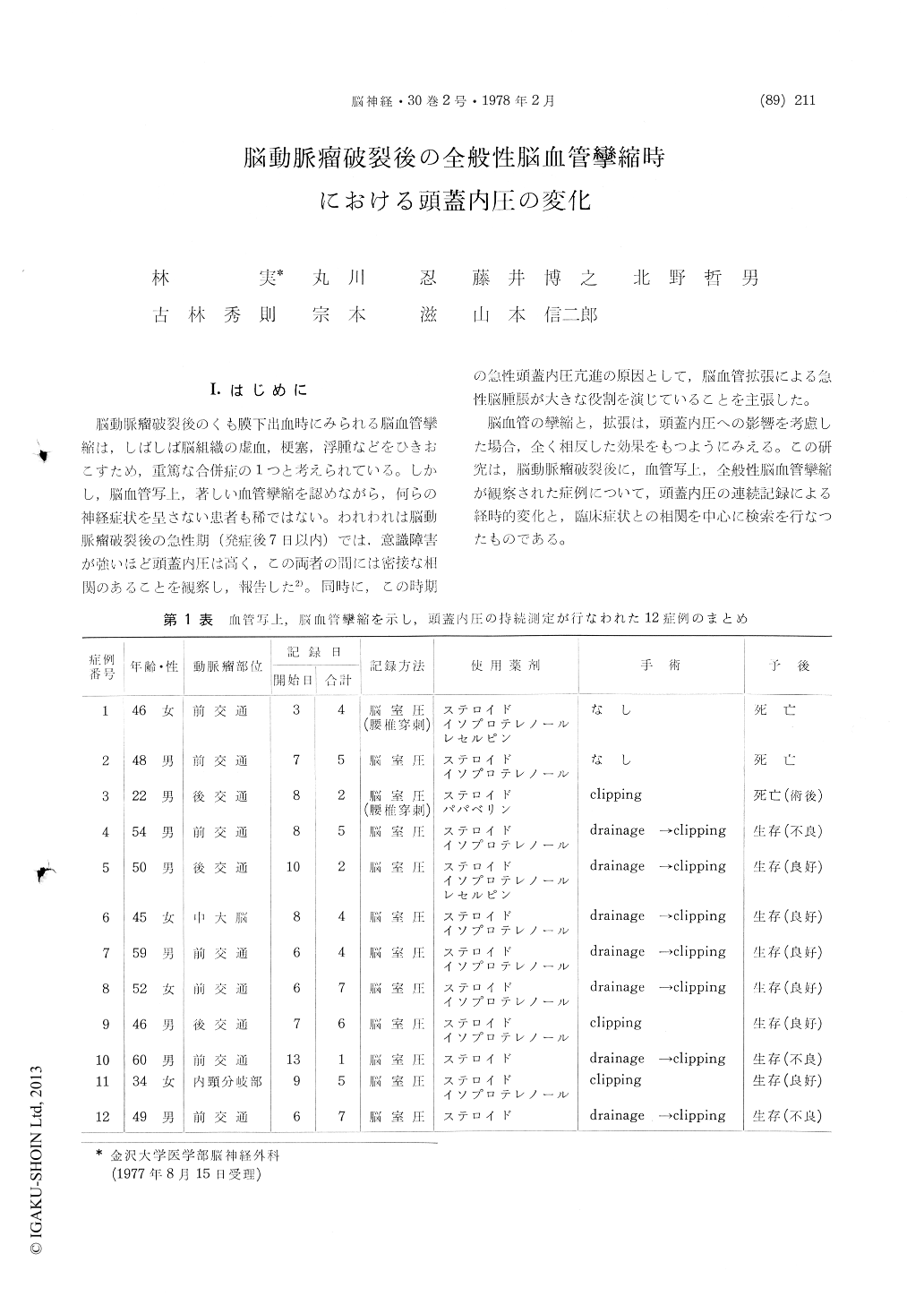Japanese
English
- 有料閲覧
- Abstract 文献概要
- 1ページ目 Look Inside
I.はじめに
脳動脈瘤破裂後のくも膜下出血時にみられる脳血管攣縮は,しばしば脳組織の虚血,梗塞,浮腫などをひきおこすため,重篤な合併症の1つと考えられている。しかし,脳血管写上,著しい血管攣縮を認めながら,何らの神経症状を呈さない患者も稀ではない。われわれは脳動脈瘤破裂後の急性期(発症後7日以内)では,意識障害が強いほど頭蓋内圧は高く,この両者の間には密接な相関のあることを観察し,報告した2)。同時に,この時期の急性頭蓋内圧亢進の原因として,脳血管拡張による急性脳腫脹が大きな役割を演じていることを主張した。
脳血管の攣縮と,拡張は,頭蓋内圧への影響を考慮した場合,全く相反した効果をもつようにみえる。この研究は,脳動脈瘤破裂後に,血管写上,全般性脳血管攣縮が観察された症例について,頭蓋内圧の連続記録による経時的変化と,臨床症状との相関を中心に検索を行なつたものである。
Intracranial pressure (ICP) was recorded continu-ously for 2 to days in 12 pre-operative patients with angiographic evidence of diffuse cerebral arterial spasm due to ruptured intracranial aneurysm. The ICP pattern of low level (below 15 mmHg) and flat type was registered in the early stage of the arterial spasm in 11 patients in whom the ICP recording was made within 11 days after the hemorrhagic attack. During the period of low and flat ICP pattern, 6 patients showed little or no neurological deterioration whereas 5 patient showed impaired consciousness or neurological deficits. In 9 out 11 patients, the low level of ICP was followed by an abnormal increase in ICP during the next few days with the occurrence of serious neuro-logical deterioration. Continuous ventricular drainage was performed to control the secondary increased ICP in 7 patients and they survived, 4 of them with good results but remaining 3 with severe neurological deficits.

Copyright © 1978, Igaku-Shoin Ltd. All rights reserved.


